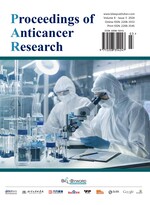Abstract
Objective: To analyze the serum uric acid results of patients with hypouricemia hospitalized in the Affiliated Hospital of Hebei University, thereby providing new insights for the prevention and treatment of hypouricemia. Method: This study employed a retrospective case analysis, dividing patients into two groups: 16 cases with uric acid levels less than 50 μmol/L (group Level 1), and 240 cases with uric acid levels between 50 μmol/L and 119 μmol/L (group Level 2). Basic data such as age, gender, department, and clinical diagnosis were collected for each patient. Renal indices, including creatinine, urea, β2-microglobulin, and cystatin C, were analyzed and compared. Results: The highest percentage of patients with uremia was found in Level 1, with a rate of 31.25%. In Level 2, the highest percentage of patients had malignant tumors, with a rate of 15.41%. Tumor sites included the liver, lungs, endometrium, ovaries, breasts, stomach, pancreas, colon, hypopharynx, and others. The second highest percentage was 13.75% for patients with lung diseases, followed by 10% for patients with cranio-cerebral diseases. Other prevalent conditions included renal diseases, hematological diseases, multiple injuries, orthopedic diseases, rheumatological-immunological diseases, and cardiac diseases. There were significant differences between the two uric acid level groups in terms of prevalent diseases (P < 0.05). Additionally, gender differences were significant between the two groups (P < 0.05). However, for renal disease indicators, no significant differences were found between the two levels (P > 0.05). Conclusion: The types of diseases presented by patients were related to different low uric acid levels. Most patients‘ renal function indices were within normal reference ranges at different low uric acid levels. The prevalence of different low uric acid levels was related to gender.
References
Zhu H, Xu Y, Mou L, 2018, A Case of Exercise-Induced Acute Renal Failure Associated with Idiopathic Renal Hypouricaemia. Chinese Journal of Emergency Medicine, 27(10): 1169–1171.
Bi J, Liang J, Zhao J, et al., 2016, Epidemiological Survey Analysis of Uric Acid in the Physical Examination Population in 2015. Chinese Journal of Health Inspection, 26(19): 2844–2848.
Ragab G, Elshahaly M, Bardin T, 2017, Gout: An Old Disease in New Perspective – A Review. J Adv Res, 8(5): 495–511. https://doi.org/10.1016/j.jare.2017.04.008
Li K, Li H, 2021, Causes of Hypouricemia in Patients with Traumatic Brain Injury and Its Relationship with Disease Prognosis. Journal of Xuzhou Medical University, 41(4): 300–305.
Liu DP, 2016, Hypouricemia. Chinese Cardiovascular Journal, 21(2): 104–107.
Huang H, Li W, 2010, Analysis of Uric Acid Results in 1364 Inpatients with Hypouricemia. Laboratory Medicine and Clinics, 7(1): 38–39.
Lin Y, Wu L, Li L, et al., 2006, Analysis of the Clinical Etiology of Hypouricemia. International Journal of Laboratory Medicine, 27(12): 1077–1078.
Wang HY, 2001, Nephrology (2nd ed). People’s Health Publishing House, Beijing.
Pan J, 2000, Clinical Significance of Reduced Serum Uric Acid Concentration. Journal of Clinical Investigation, 18(6): 380–381.
Sebesta I, Stiburkova B, 2014, Purine Disorders with Hypouricemia. Pril (Makedon Akad Nauk Umet Odd Med Nauki), 35(1): 87–92.
Son CN, Kim JM, Kim SH, et al., 2016, Prevalence and Possible Causes of Hypouricemia at a Tertiary Care Hospital. Korean J Intern Med, 31(5): 971–976. https://doi.org/10.3904/kjim.2015.125
Lehto S, Niskanen L, Rönnemaa T, et al., 1998, Serum Uric Acid is a Strong Predictor of Stroke in Patients with Non-Insulin-Dependent Diabetes Mellitus. Stroke, 29(3): 635–639.
Zhou X, Yao C, 2006, Analysis of the Etiology of 177 Patients with Hypouricemia. China Primary Medicine, 13(1): 25–26.
Qiu H, Zhu Y, Xiao S, 2003, Observation of 3663 Cases of Hypouricemia in Hospitalized Patients. Journal of Nanjing Military Medical College, 25(2): 110.
Sin X, Zhou J, Fan R, 2009, Analysis of the Etiology of 180 Cases of Hypouricemia in the Elderly. Journal of Soochow University (Medical Edition), 29(6): 1249–1250.
Zhang Y, Ma Y, Liu H, 2010, Hypouricaemia and Clinical Critical Illness. Laboratory Medicine and Clinics, 7(4): 364–365.
Maiuolo J, Oppedisano F, Gratteri S, et al., 2016, Regulation of Uric Acid Metabolism and Excretion. Int J Cardiol, 213: 8–14. https://doi.org/10.1016/j.ijcard.2015.08.109
Hisatome I, Tanaka Y, Ogino K, et al., 1998, Hematuria in Patients with Renal Hypouricemia. Intern Med, 37(1): 40–46. https://doi.org/10.2169/internalmedicine.37.40
